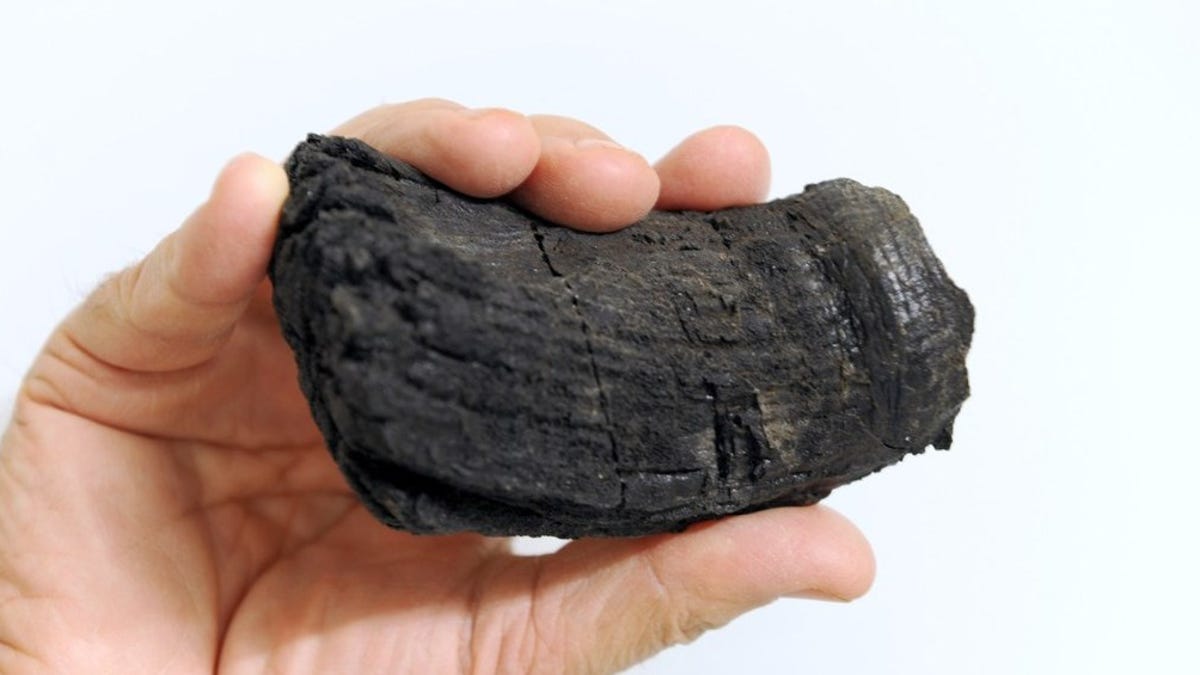Tooth Fossil From 205 Million Years Ago Sheds Light on 'Giant Sea Creatures'
The ancient ichthyosaur fossils came from high up in the Swiss Alps.

This is the thickest ichthyosaur tooth ever found.
A fresh look at fossils uncovered decades ago is helping to supplement paleontologists' understanding of massive ocean-dwelling animals that thrived over 200 million years ago.
The fossil record for Late Triassic giant ichthyosaurs -- sometimes referred to as "fish lizards" -- is a bit thin, which has been a head-scratcher for scientists. University of Bonn paleontologist Martin Sander said it "remains a great mystery to this day." Sander is lead author of a study on rib fragments, vertebrae and a huge tooth found high up in the Swiss Alps between 1976 and 1990. The paper published in the Journal of Vertebrate Paleontology this week makes sense of these nearly forgotten fossils.
Ancient ichthyosaurs could reach the size of sperm whales. This illustration shows an ichthyosaur feeding during the Late Triassic.
Ichthyosaurs likely resembled whales and dolphins, but were reptiles. Researchers estimate they could have weighed up to 80 tons. The reexamined fossils came from three animals. A vertebra suggests one of them was about 66 feet (20 meters) in length.
Sander called the tooth "particularly exciting" and "huge by ichthyosaur standards." The paper says the fossil confirms that at least some giant ichthyosaurs had teeth.
While the tooth is gigantic, it doesn't necessarily mean its owner was. "This is because research assumes that extreme gigantism and a predatory lifestyle (which requires teeth) are incompatible," said the University of Bonn. The aquatic reptile may have just been an ichthyosaur with particularly large teeth, likely no larger than a modern-day sperm whale.
Heinz Furrer of the University of Zurich, a study co-author, originally uncovered the extraordinary fossils with students at an altitude of 9,200 feet (2,800 meters) in an area of the Alps known for glaciers. It shows how radically the landscape of a place can change over many millions of years. The region could be a potential hotspot for additional fossils. Said Sander, "Maybe there are more remains of the giant sea creatures hidden beneath the glaciers."

